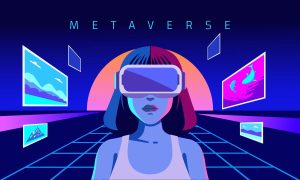
What is the Difference Between Mixed, Virtual, and Augmented Reality?
In recent years, technological advancements have revolutionized the way we perceive and interact with the digital world. Three terms that often come up in discussions about these advancements are mixed reality (MR), virtual reality (VR), and augmented reality (AR). While they all involve immersive digital experiences, each term represents a distinct technology with its own characteristics and applications.
In this article, we will delve into the differences between mixed reality, virtual reality, and augmented reality to gain a clearer understanding of each.
Virtual Reality (VR):
Virtual reality refers to a fully immersive digital experience that transports users into a computer-generated environment, completely replacing their perception of the real world. VR typically involves wearing a head-mounted display (HMD) that covers the user’s eyes and displays a 3D virtual world. By tracking the user’s head movements, VR systems provide a sense of presence and allow users to interact with the virtual environment through handheld controllers or specialized gloves.
The primary objective of VR is to create a convincing illusion of being present in a different reality.
Virtual reality finds applications in various fields, including gaming, training simulations, architectural design, and healthcare. In gaming, VR can provide a deeply immersive experience, allowing players to feel as if they are inside the game world. Training simulations can be used to simulate real-life scenarios in a safe environment, such as flight simulators for pilots or surgical simulations for medical professionals.
Architects can use VR to visualize their designs in three dimensions, enabling clients to experience and provide feedback on virtual walkthroughs. Additionally, VR has been used in healthcare to treat phobias, manage pain, and aid in physical rehabilitation.
Augmented Reality (AR):
Augmented reality overlays digital content onto the real world, enhancing the user’s perception of their surroundings. Unlike virtual reality, which replaces the real world entirely, AR supplements and enhances it. AR is typically experienced through mobile devices or wearable devices like smart glasses, which overlay virtual elements onto the user’s view of the real world.
These virtual elements can include text, images, 3D models, or animations, which are integrated seamlessly with the user’s environment in real time.
AR has gained significant popularity through smartphone apps like Pokémon Go, where users can see virtual creatures overlaid on their smartphone camera view. Beyond gaming, AR has applications in fields such as education, retail, and navigation. In education, AR can provide interactive and immersive experiences, bringing textbooks to life or enabling students to explore historical sites virtually.
In retail, AR can allow customers to try on virtual clothing or visualize furniture in their homes before making a purchase. AR can also enhance navigation by providing real-time directions and information about points of interest directly in the user’s field of view.
Mixed Reality (MR):
Mixed reality combines elements of both virtual reality and augmented reality to create a spectrum of experiences where digital and physical objects coexist and interact in real time. In mixed reality, virtual objects are not only overlaid onto the real world but also anchored to it, allowing users to interact with both physical and virtual entities simultaneously. MR systems use sensors, cameras, and depth-sensing technologies to accurately track the user’s position and the position of physical objects in real space.
With mixed reality, users can manipulate virtual objects or collaborate with others in a shared digital space while seeing and interacting with their physical surroundings. For example, in a mixed reality workspace, users can have virtual monitors floating in the air while still being able to see and use their physical keyboard and mouse. MR has significant potential in fields like design and engineering, where users can visualize and manipulate virtual prototypes in real-world contexts, improving the design and testing process.
In conclusion, while mixed reality, virtual reality, and augmented reality share similarities in terms of immersive digital experiences, they differ

